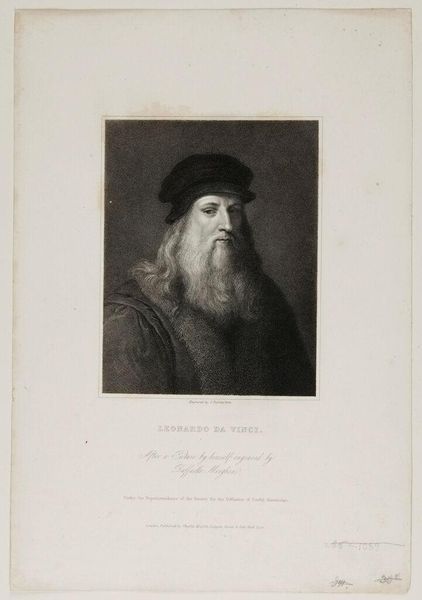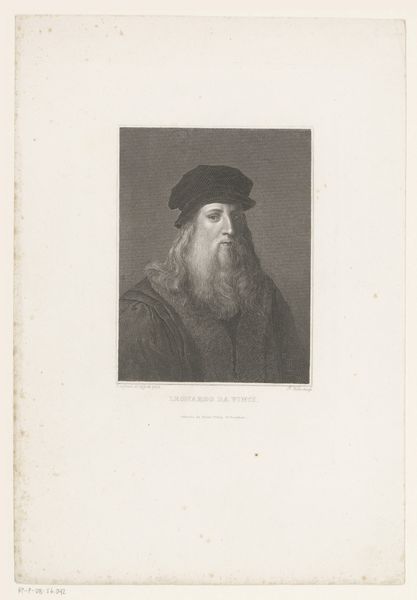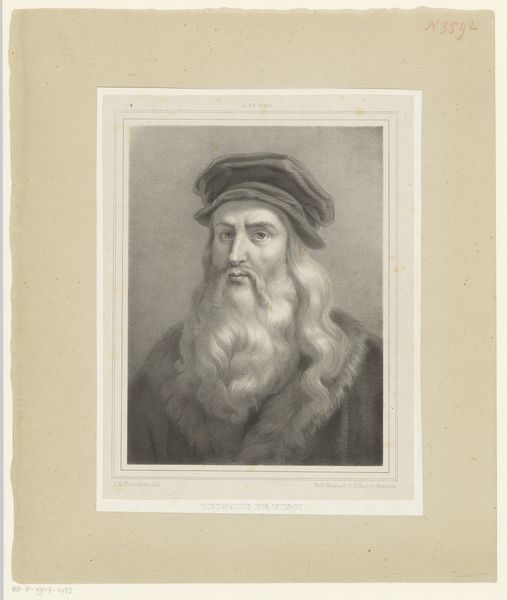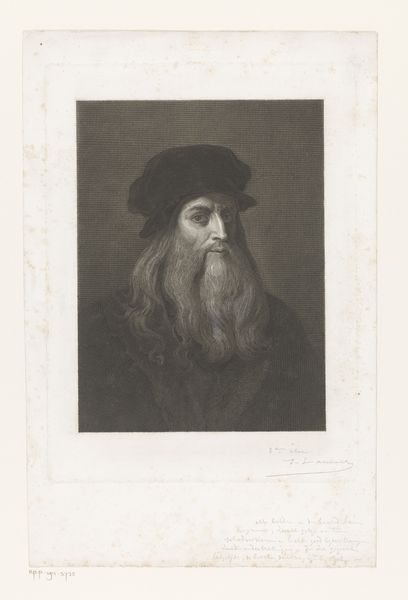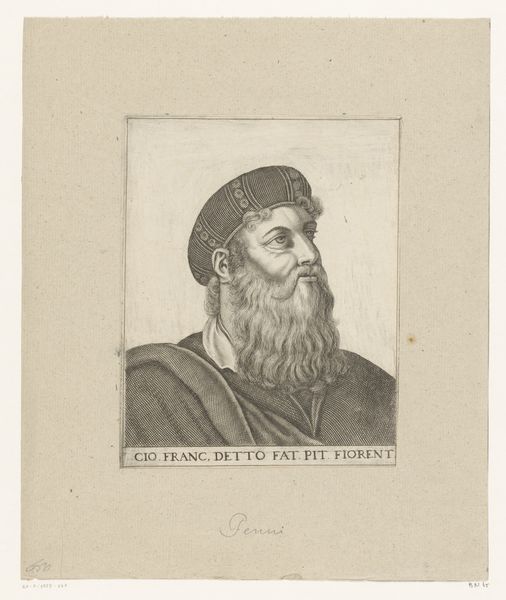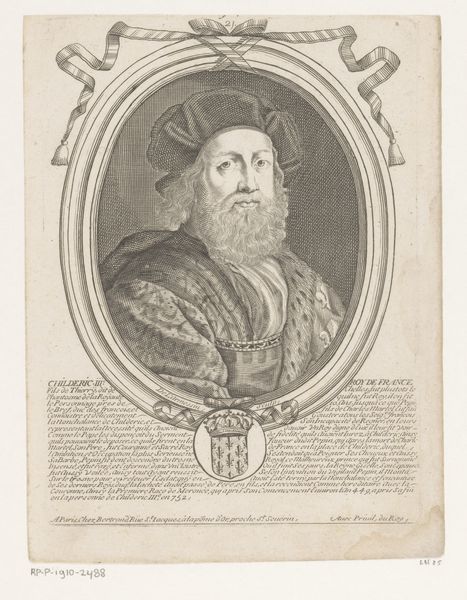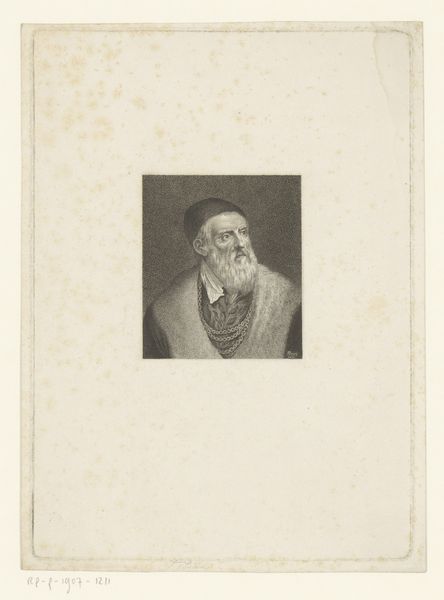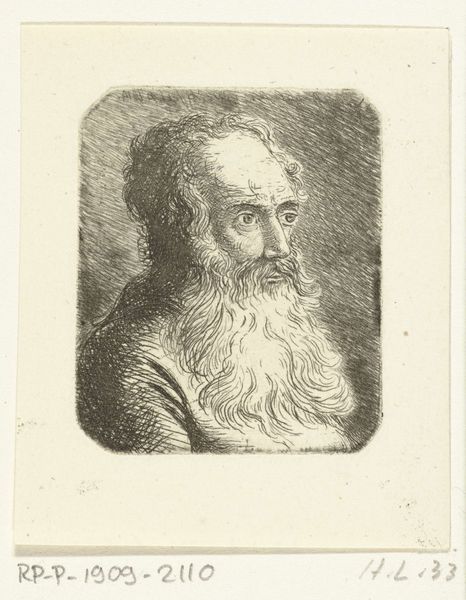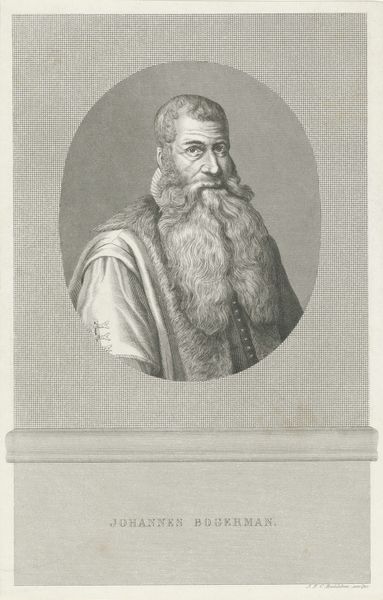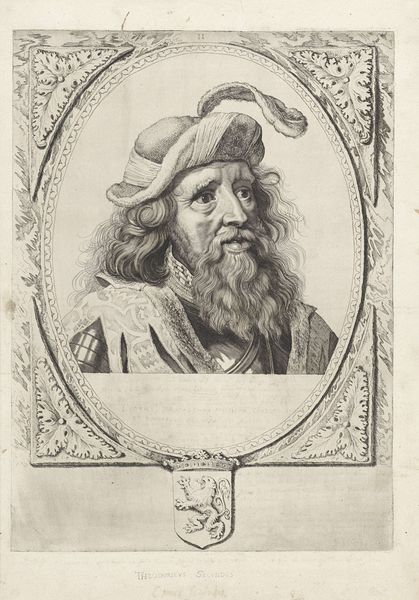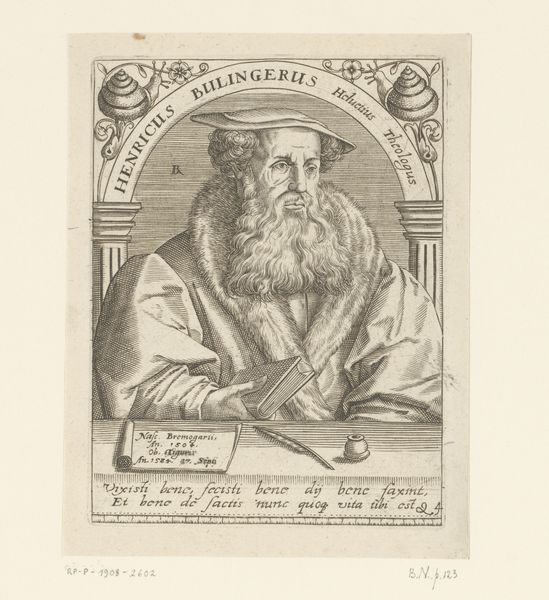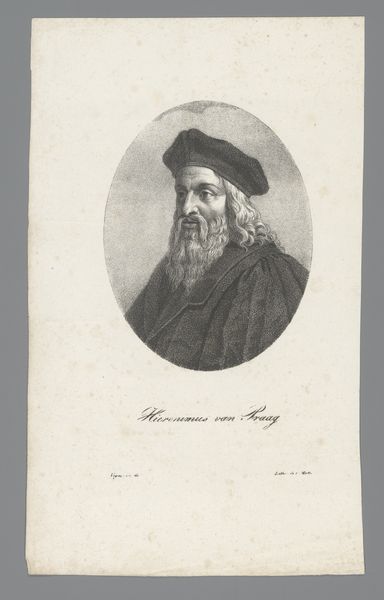
print, etching, engraving
#
portrait
#
pencil drawn
#
neoclassicism
# print
#
etching
#
old engraving style
#
history-painting
#
engraving
Dimensions: height 163 mm, width 115 mm
Copyright: Rijks Museum: Open Domain
Curator: Standing before us is Giovacchino Cantini's "Portret van de kunstenaar Leonardo da Vinci," an engraving, etching, and print dating between 1790 and 1844, rendered in a Neoclassical style. Editor: It's immediately striking. The subtle use of grayscale creates an interesting contrast, making it almost appear like a vintage photograph at first glance, even though it is not a photograph. Curator: Indeed. Cantini meticulously employs the engraving and etching techniques. The texture of Da Vinci's beard, for example, is rendered with an impressive level of detail achieved through cross-hatching. The hat also presents a series of intricate curves through line work. Editor: The image evokes the period when great thinkers and artists became subjects of admiration and their images circulated widely. Notice the dedication inscribed below the portrait; these served a critical role in publicly associating an artist and a work with certain key individuals, building patron networks and political ties. Curator: An essential aspect of the work is how it reinterprets Da Vinci. Observe how the composition uses an interesting geometry, especially around his eyes and in the folds of the drapery around his shoulders, adding dimension and weight. We could even see this as part of the early developments within what we now call Neoclassicism. Editor: It’s an interesting point. Looking at how Da Vinci is portrayed in this print offers us an important lesson regarding image making and how great art makers get appropriated by different groups to deliver new messages. Curator: In sum, Cantini provides us with an insightful glimpse of Da Vinci, filtered through the lens of the late 18th and early 19th centuries. The meticulous detail and considered composition make it a compelling piece for studying not just the past, but its reverberations within the development of Neoclassical art. Editor: And also as a way of looking at the function that images serve for people and patrons with particular intentions.
Comments
No comments
Be the first to comment and join the conversation on the ultimate creative platform.
